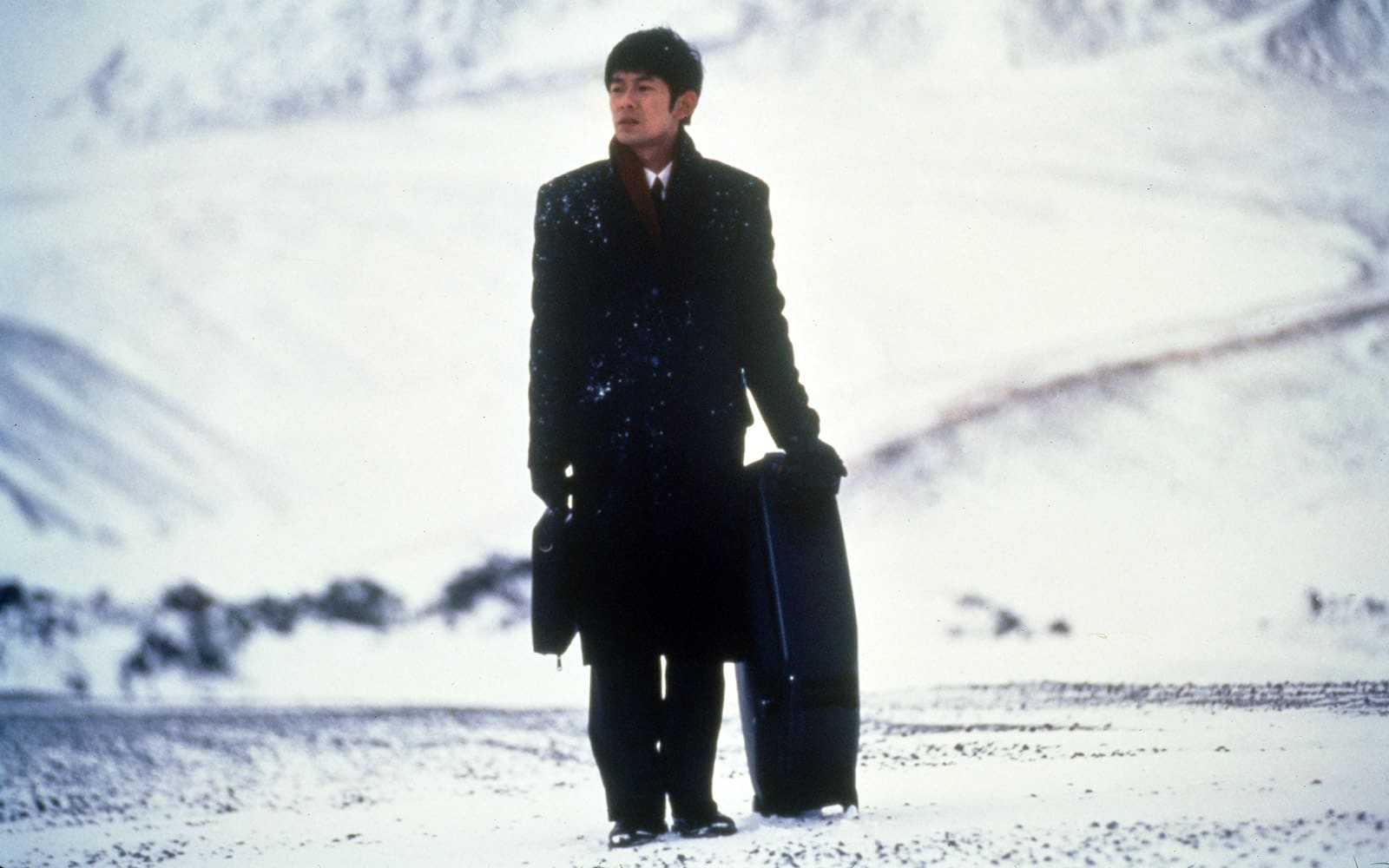Cold Fever by Friðrik Þór Friðriksson (Review)

One of my favorite films of all time is Children of Nature, a film so beautiful that it’s one of the few films to actually bring tears to my eyes. This haunting tale of two old people, abandoned by their families and trying to return to the village of their youth, is one of those rare films that I can honestly classify as a “work of art.”
So when I saw this movie on the shelf, directed by Friðrik Þór Friðriksson, I had to watch it. Unfortunately, this film doesn’t deliver as much as Children of Nature. It does share some similar themes with Children of Nature, primarily that of a journey to reconcile with the past. In Children of Nature, the journey was to the home of one’s youth so that one could rest in peace. In Cold Fever, a Japanese businessman (played by Masatoshi Nagase) travels to Iceland to perform a memorial service at the site of his parents’ death, so that their souls may be in peace.
However, Cold Fever seems too preoccupied with being quirky. The businessman runs into all sorts of characters: a taxi driver who participates in nativity reenactments; a group of Icelandic cowboys; and finally an American couple on the lam. The movie has its lighthearted and whimsical moments, but they seem gratuitous and distracting, lessening the emotional impact that the movie could have had. It’s almost as if Friðriksson wanted to show off the little quirks and lovable foibles of his homeland, and did just that. In fact, a great deal of film simply consists of Masatoshi shaking his head or staring in bewilderment at the oddities of the characters he runs into.
Like Children of Nature, Cold Fever boasts some of the most beautiful cinematography I’ve ever seen. Often filmed in the middle of nowhere, Iceland’s countryside is truly breathtaking, and Friðriksson treats it like a supporting character. I’m reminded of the scenes in Fargo of desolate highways out in the middle of nowhere, but Cold Fever’s scenery has a much more ephemeral quality to it. Hilmar Örn Hilmarsson, who provided the score for Children of Nature provides the music here, but it doesn’t seem as pronounced, or as integral and tightly woven with the film as it did in Children of Nature.
I know it’s unfair to compare two films so much, but in my mind, I can’t help it. Cold Fever promises much, and strives to deliver it all — humor, the supernatural, grief, reconciliation — but does not have anywhere near the emotional impact that Children of Nature did. I think it’s worth seeing, just to see the fairy-tale like elements of the film, and the beautiful cinematography. Just don’t go in expecting too much, like I did. See this one first, and then catch Children of Nature. Cold Fever will bring a smile to your face. Children of Nature will bring tears to your eyes.
